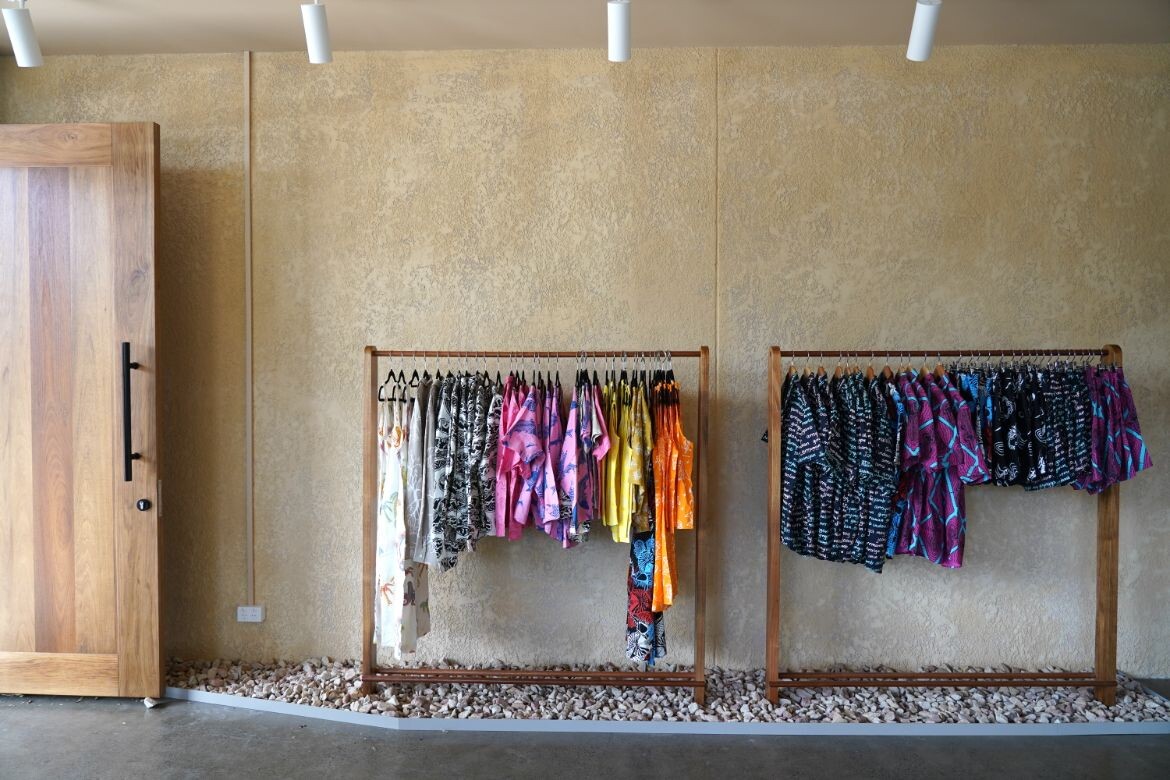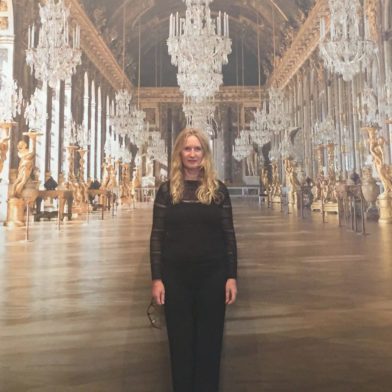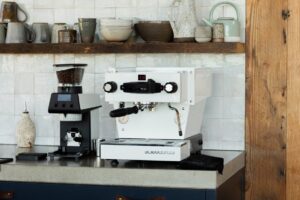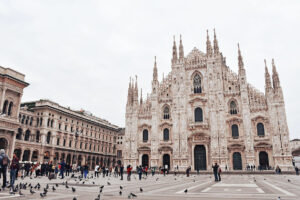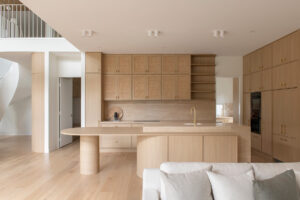Stepping into the world of bricks and mortar, Aboriginal-owned and ethically made in Australia, Magpie Goose owners Amanda Hayman (Kalkadoon/Wakka Wakka) and Troy Casey (Kamilaroi) co-designed a new flagship store with architectural design practice, Hogg & Lamb.
Opened in early September, the prominent corner-positioned store has the visual hallmarks of this fine practice with clear lines, naturally textural materials and an abundance of natural light.
Amanda and Troy’s other business, Blaklash, utilises a Designing with Country framework to synthesise stories of place, narratives of community and the essences of Country in meaningful, sophisticated and deliverable spatial outcomes.
As such, Mandandanji woman Erin McDonald, the design and interiors principal at Blaklash, led the process for the store. Speaking to the deep connection to Country, the store, for example, features repurposed boulders from the local area. Beautiful and multi-coloured, the Brisbane Tuff is ubiquitous with Magandjin/Meanjin (Brisbane) and makes a direct visual reference to the heritage-listed Woolloongabba/Kangaroo Point cliffs on the CBD-facing side of the Brisbane River.

The rest of the store leans into natural tones and simple design features to keep the spotlight on the bold and vibrant Magpie Goose garments. Pairing yellow and orange ochres for the interior, the deeper shade sits within the ceiling void with utilities painted in the same shade.
Columns and the outer edge of the ceiling and walls in the lighted shade act to frame the store composition, which is ostensibly an open square with the garments displayed at the perimeter. Set in a border of pebbles surrounding the polished concrete floor are the simple but effective timber clothes racks, which create a circulating flow for patrons.
With the large timber entrance door to the left, shoppers naturally follow a scientifically noted clockwise rotation through the store (Akmr Karim, National Institute of Health), around a four-metre central table crafted by Lardil man Gareth Robertson, of Blackwood Collective.
Creating the artisan piece from Tasmanian blackwood, the table acts as an invitation into the Magpie Goose home: “A place where one can sit down, have a cuppa and a yarn. With each garment telling a story, there is a lot to share at the table. From this centrepiece, the rest of the design was imagined,” say Amanda and Troy.

Effectively, the store allows the label, which has partnered with Aboriginal artists since its inception, to use the physical space to continue its work in providing a platform for storytelling through art. Through the clothing itself, Magpie Goose posits the garments as a medium for sharing culture, with each limited edition collection made from fabric screen-printed by artisans.
The aim of the brand has consistently acted to “create unique and wearable garments designed to make a statement while generating economic opportunities for Aboriginal and Torres Strait Islander people through creative industries,” they say. Moreover, in choosing 100 per cent natural fibres and expertly made to last, the label treads softly on the earth, encouraging people to care for Country with every purchase they make.
In their opening statement, Amanda and Troy make it clear that the store is far from a click-and-collect outlet for their online presence: “Having an opportunity to welcome visitors to the store on a daily basis, Magpie Goose hopes to spark more conversations, more learning and more exploring of the rich stories of the label’s collaborating artists.”
Project details
Interior design – Magpie Goose + Hogg & Lamb
Location – Magandjin / Meanjin / Brisbane
Photography – courtesy Magpie Goose
RELATED: We think you might like this story about Emro Designs and Emma Rolls’ approach to Indigenous co-creation.






